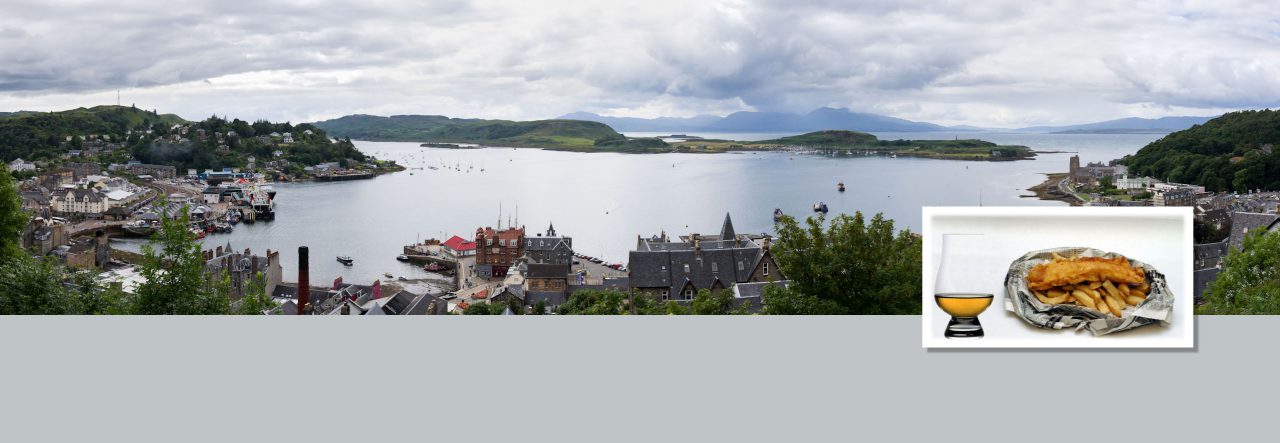In which I see a single road sign while driving around on my own, and the realization that I really don’t want this trip to finish in two days comes crashing down on me.
Author: The Master Distiller
In which we take it easy at home, around the village, and with friends who feed us very well on a rooftop patio, where the food wasn’t the only thing nicely cooking.
PENDING
In which we bid our farewells to my folks, spend 7 hours enjoying the beautiful scenery of the M74, M6, and other M’s, and squeeze in a final dinner with a friend.
PENDING
In which we do a beautiful job of balancing the weight across our luggage, sit on a plane for a long time, and I’m let back into the country. Also, I let Mija drive, just in case.
PENDING
In which I have opinions… about airports, flights, and holidays. I also drink gin.
Introduction
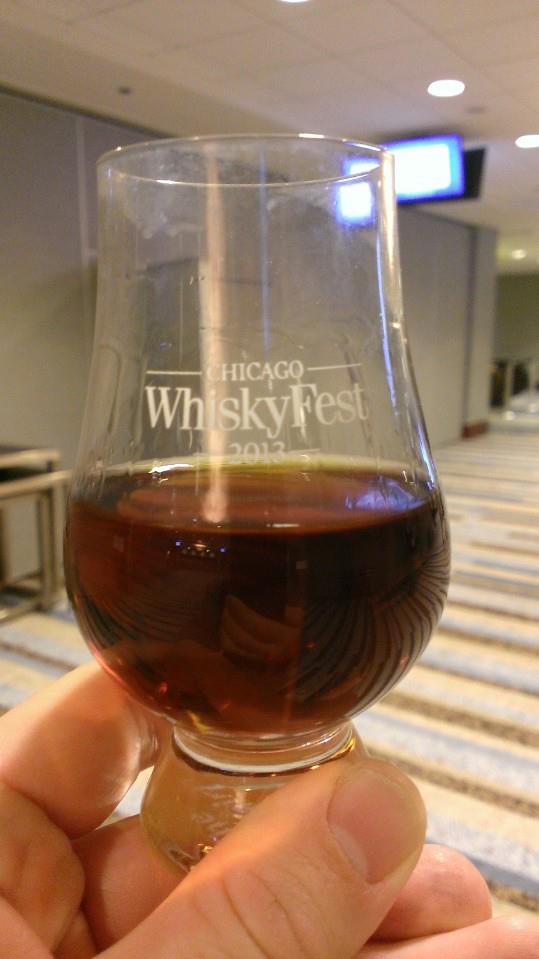 Spirits festivals are fun. They’re a great way to learn more about your favourite spirit (or learn about a new spirit), get to know the people behind the product, meet fellow enthusiasts, and try things you haven’t tried before or wouldn’t otherwise be able to try. They’re hugely fun events. (Fortunately, very few people attend them with the intent of getting drunk and unruly.)
Spirits festivals are fun. They’re a great way to learn more about your favourite spirit (or learn about a new spirit), get to know the people behind the product, meet fellow enthusiasts, and try things you haven’t tried before or wouldn’t otherwise be able to try. They’re hugely fun events. (Fortunately, very few people attend them with the intent of getting drunk and unruly.)
But these events are a wee bittie tough on the body. After all, alcohol is a toxin, and the body doesn’t react all that favorably to its consumption (at least, mine doesn’t). So I and my whiskyfest cohort have developed a fairly disciplined approach to the events which has allowed us to be far more, um, “successful” that we have any right to be without major medical attention.
So I’ve tried to write it up, along with some of the reasoning behind it. I therefore proud-ishly present my own guide on how to get the most out of a spirits festival while minimizing the more detrimental effects on the body. I thought that sharing a little knowledge might help some other interested folks make the right preparations, and set some good expectations. It’s a fairly structured approach, but it doesn’t detract from the enjoyment. Quite the opposite: it paves the way for a more enjoyable event.
Surviving a spirits festival such as WhiskyFest is partly about preparation, but really what it comes down to is managing your Blood Alcohol Concentration (BAC) during the event. Ultimately, no matter how seasoned you are, or what preparations you undertake, your body can only metabolize alcohol at a fixed rate. And that rate is determined by the fixed amount of two different enzymes stored (primarily) in your liver.
However, while you can’t change how much alcohol is processed out of the bloodstream over time, you can manage the rate at which alcohol is absorbed into the bloodstream to begin with. You can’t prevent it, and you certainly don’t have total control over it (OK, you could stop drinking, but that kinda defeats the purpose of being there). But a deliberate approach to the event will allow you to help your body do the work it needs to do to keep the toxin at bay. So let’s take a look at how we go about all this.
BAC’s What It’s All About
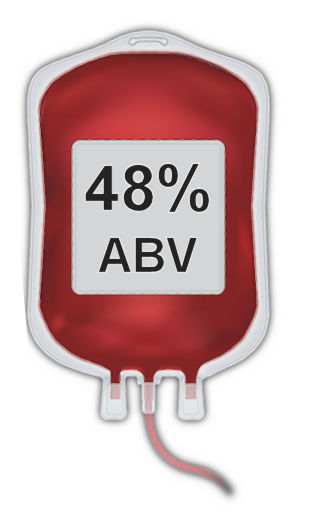 Ultimately, then, the whole approach to a successful spirits festival boils down to managing your Blood Alcohol Concentration (BAC). If it gets too high, game’s over. If you can keep it under control, things will be just fine. Or, at least, tolerable.
Ultimately, then, the whole approach to a successful spirits festival boils down to managing your Blood Alcohol Concentration (BAC). If it gets too high, game’s over. If you can keep it under control, things will be just fine. Or, at least, tolerable.
The best way to manage BAC is to manage the rate at which the alcohol is absorbed into your bloodstream. Alcohol is absorbed through the stomach and small intestine. The absorption happens more slowly in the stomach and more quickly in the small intestine (it’s all about surface area). The first trick, then, is to stop it getting to the small intestine, or at least slow down its inevitable progress in that direction. If you have food in your stomach, the door to the small intestine closes so that your stomach can do the whole digestion thing, trapping the alcohol in there with the food. So you eat. Eat before the event, and eat during the event. What food, how much, and when? More on that later.
There are other factors affecting BAC. There’s the rate at which you consume the alcohol, the type of alcoholic beverage being consumed, and the percentage of alcohol by volume (ABV) of the drink. There are also variations in the alcohol-metabolizing enzymes from person to person. Sex also makes a difference, which we’ll talk about in moment. But first, let’s talk water.
Alcohol is absorbed by water. If you think of BAC as a function of total amount of alcohol in your system divided by total volume of water in your body, you’ll see that the more water that’s available to absorb the alcohol, the lower the concentration. Basically, body water dilutes alcohol internally just like adding water to your drink dilutes it externally.
Alcohol is not absorbed by fat (low water content), but it is absorbed by muscle (high water content). Therefore, body mass alone is not necessarily an advantage; it depends on the composition of the mass. A large, muscular, well-hydrated person will have a lower BAC than an equally large but overweight, poorly hydrated individual after consuming the same amount of alcohol.
Women are at several natural disadvantages in this game. On average, a woman’s body contains a lower percentage of water than a man’s, which means a lower percentage body volume available to absorb the alcohol. Women tend to have more subcutaneous fat, further reducing available volume and therefore increasing concentration in the blood. And women’s bodies also tend to contain slightly less of the first enzyme responsible for metabolizing alcohol, slowing the rate at which it can be processed out of their bloodstream. Women, shafted again, three times over.
In terms of baseline, then, your sex, your level of physical strength and fitness, and the amount of those amazing enzymes available in your liver all affect BAC. Not much you can do about those as you approach the event. But you can manage the rise in BAC during the event by eating food and drinking water. Easy, right? Actually, yeah, it really is, though a little planning will increase the effectiveness even more.
Warning * Caution * Danger * Please Be Careful
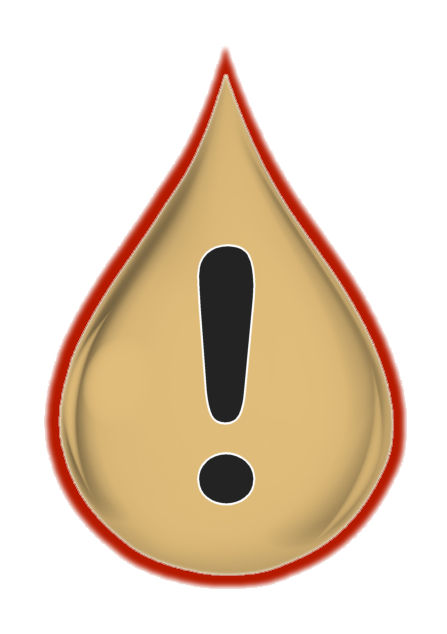 Before we get into this, I would be negligent if I didn’t offer HUGE warnings and words of caution. Training for an event like this basically boils down to drinking more in advance of the event. So I’m about to suggest that you consume more alcohol than you usually would. There should be some (hopefully) obvious concerns here.
Before we get into this, I would be negligent if I didn’t offer HUGE warnings and words of caution. Training for an event like this basically boils down to drinking more in advance of the event. So I’m about to suggest that you consume more alcohol than you usually would. There should be some (hopefully) obvious concerns here.
While a single spirits tasting event is, I think, unlikely to trigger any latent tendencies, increasing your weekly or daily consumption for several weeks in a row might. So please, please, please be careful. Be incredibly self aware. And if you sense a problem, stop. Know the difference between tolerance and dependence. If you feel the need, not a good sign.
If you are someone who has addictive tendencies, either by personality or genetics, this may be a terrible idea. I would only recommend this if you know, for a fact, with an absolute certainty, that you will be able to reset back to your norm after the event.
Know Yourself
If you’re the kind of person who gets easily obsessed with and lost in things, keep an eye on yourself. I have a bit of an addictive nature, at least in some areas. Kinda comes with the whole geek thing. One thing I geek out about, as it turns out, is whisky. I get excited at these events and love to try more, to compare, to contrast, and to learn. Afterwards, there’s a bit of a temptation to keep going. I sport a good collection at home and it would be easy for me to pour myself a dozen samples to compare, contrast, and check against my notes. So I don’t. Quite deliberately. It’s one of the things I find helpful about detox week (see below). It helps me to break the streak before it happens.
Know Your Family / Genetics
I’m lucky: there’s no history of alcoholism or other such addictions in my family. And I want to be clear that I make no judgement about anyone who suffers such an addiction, or has had related exposure. Not my place, and frankly, I don’t know enough about it. BUT it seems appropriate to recommend against increasing your drinking habit if there is a history of alcoholism or alcohol abuse in your family. I don’t know what an alternative might be: perhaps just pay more attention to the preparation and management sections below.
Training in Advance
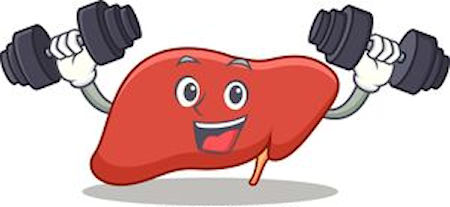 Training essentially boils down to drinking more in the lead up to the event. Yeah, not something your average fitness or health professional is likely to recommend, but it does have its merits… well, benefits, in this very specific context. Alcohol is a toxin, and as such, your body can learn to deal with it through greater exposure: develop a greater tolerance. Tolerance is actually a tricky term here. Functional vs learned vs metabolic tolerance are each different things. Functional means your brain has adapted to work around the detrimental behavioral effects alcohol has on the brain. Learned means you’ve taught yourself how to respond to certain things while intoxicated (and I’m not just talking about memorizing the alphabet backwards). Metabolic means your liver has adjusted to produce greater quantities of the enzymes necessary to metabolize the booze. Bingo! This latter one is the handiest of the three, but sadly it really only happens in response to increased consumption. If you don’t drink much usually, you’re going to want to drink a little more than normal in advance of the event. If you’re a casual drinker, a few times a week or a small amount a day, you may want to become a little more intentional. You definitely do not want to go sober for the period leading up to the event: that’s zero to aida, it’ll be a helluva a shock to the system, and your body will not respond well.
Training essentially boils down to drinking more in the lead up to the event. Yeah, not something your average fitness or health professional is likely to recommend, but it does have its merits… well, benefits, in this very specific context. Alcohol is a toxin, and as such, your body can learn to deal with it through greater exposure: develop a greater tolerance. Tolerance is actually a tricky term here. Functional vs learned vs metabolic tolerance are each different things. Functional means your brain has adapted to work around the detrimental behavioral effects alcohol has on the brain. Learned means you’ve taught yourself how to respond to certain things while intoxicated (and I’m not just talking about memorizing the alphabet backwards). Metabolic means your liver has adjusted to produce greater quantities of the enzymes necessary to metabolize the booze. Bingo! This latter one is the handiest of the three, but sadly it really only happens in response to increased consumption. If you don’t drink much usually, you’re going to want to drink a little more than normal in advance of the event. If you’re a casual drinker, a few times a week or a small amount a day, you may want to become a little more intentional. You definitely do not want to go sober for the period leading up to the event: that’s zero to aida, it’ll be a helluva a shock to the system, and your body will not respond well.
Somewhat arbitrarily (but it seems to work), I start to increase my consumption of alcohol about 4-6 weeks before the event. I certainly don’t drink enough to get drunk – apart from anything else, it’s not a condition that I enjoy – because that’s not the point of this exercise. The ultimate goal is enjoyment of the event, and there’s no reason the build-up should be less enjoyable. All we’re doing at this point is increasing our body’s exposure to our toxin of choice so that it is a little better prepared to deal with the big night. The intent is not to replicate the experience many nights in a row in the lead-up.

Go slowly. Start by consuming only one more drink than you normally would…
- If that’s 0, start with 1 or even just 1/2 a drink.
- If you normally have 1 or 2 drinks a week, increase to 2 or 3, then 3 to 4.
- If you usually have 1 drink a day, maybe increase to 1.5, or 2, depending on what it is and the ABV e.g. a second pint of beer might be OK; a second full martini would be a much bigger jump.
- Have a glass of water between drinks to help regulate your intake, and keep you hydrated.
- And don’t forget to eat food, for the various reasons noted above. It won’t affect the training.
- Pay attention to yourself and stop or step it back if it’s feeling bad. Listen to your body. Again, this shouldn’t be a chore.
This kind of stepped or moderated approach should help to ensure that you don’t drink too much as you try to increase your tolerance. It’s worked pretty well for me in the past, though “your experience may vary.”
T-minus 24-48 Hours
Get Some Rest
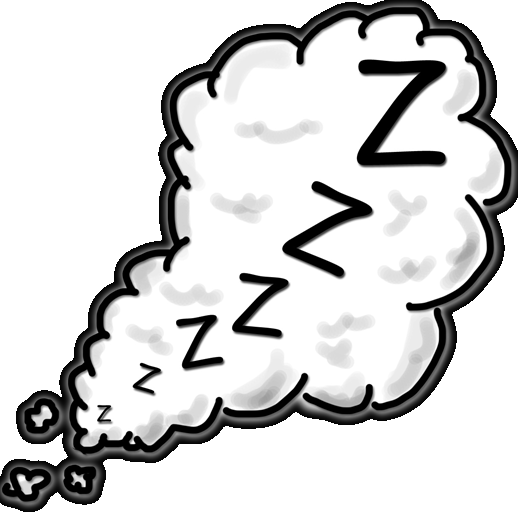 If you start the event tired, you’re screwed. Much like anything else you do, if you’re not well rested, your body isn’t going to be as resilient. Don’t pull an all-nighter, or even a short-nighter before the event. In fact, rest up really well that entire week if you can. Come at this fresh, as if it were a major physical event… Because, you know, it’s a major physical event. More sciencey, but only barely: if your body is fatigued, all of it is fatigued, including the liver. That means it’s less efficient at processing alcohol. If you’ve been training, you’ll undo some of your hard work. Again, this is a physical event. It’s in no small part about endurance, and your endurance will be improved if you’re well rested.
If you start the event tired, you’re screwed. Much like anything else you do, if you’re not well rested, your body isn’t going to be as resilient. Don’t pull an all-nighter, or even a short-nighter before the event. In fact, rest up really well that entire week if you can. Come at this fresh, as if it were a major physical event… Because, you know, it’s a major physical event. More sciencey, but only barely: if your body is fatigued, all of it is fatigued, including the liver. That means it’s less efficient at processing alcohol. If you’ve been training, you’ll undo some of your hard work. Again, this is a physical event. It’s in no small part about endurance, and your endurance will be improved if you’re well rested.
Drink Water
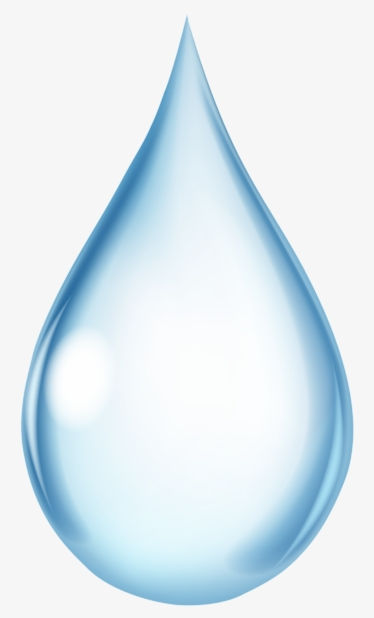 Hydration is key (more on that later). If you’re not someone who compulsively drinks water or other toxin-free fluids, get yourself a head start a day or two out to set a good base.
Hydration is key (more on that later). If you’re not someone who compulsively drinks water or other toxin-free fluids, get yourself a head start a day or two out to set a good base.
Plan Your Event
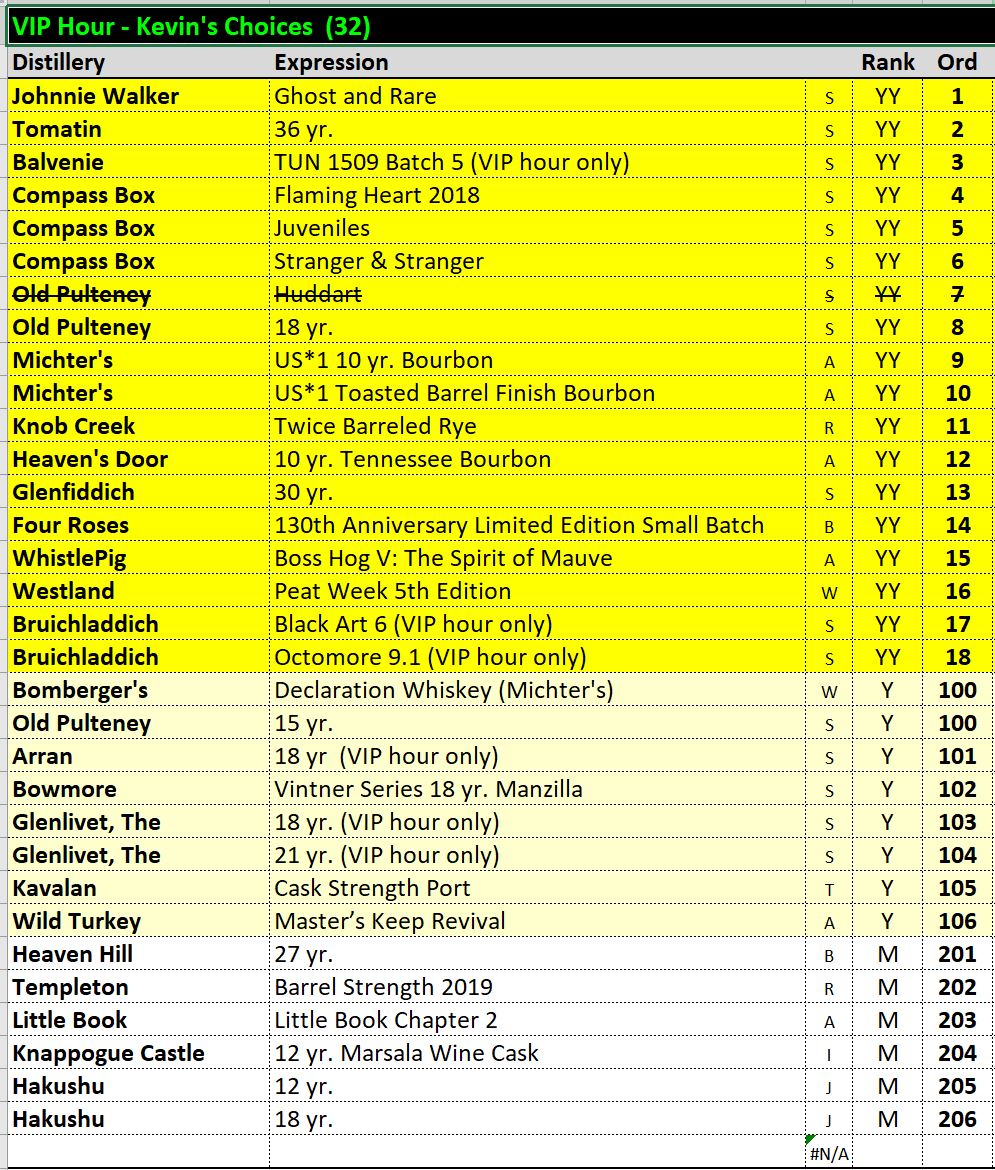 Having a plan of attack is a good idea for newbies and seasoned pros alike. It decreases the likelihood of you getting overwhelmed by the choices and simply trying everything in sight (ask me about my first WhiskyFest some time). OK, maybe not everything in sight, maybe just getting carried away. If you have a plan – a list of things that you want to try – you can vet it ahead of time and make sure that it’s a reasonable amount. I have a tiered approach: Tier 1 is must-haves; Tier 2 is want-to-try but could live without if need be; Tier 3 is the bonus round (I either survived both of Tiers 1 and 2, or there were enough gaps that I have tolerance to spare). I always have more on my list than I consider humanly possible to consume, but that just leaves things for me to try next time around! To make a plan, check out the event site and look for the list of what’s being poured. Have a read through it, decide what looks interesting, and make your own shortlist. If you’re still relatively new to the spirit, pick a couple of names that you recognize and start there. Take a look at their websites and look for partner distilleries. Or just plan on hitting those tables at the event and maybe asking them for recommendations. Regardless of how you generate your list, having a plan will bring a little focus and intentionality to your approach to the evening, and that structure will work nicely with your other preparations.
Having a plan of attack is a good idea for newbies and seasoned pros alike. It decreases the likelihood of you getting overwhelmed by the choices and simply trying everything in sight (ask me about my first WhiskyFest some time). OK, maybe not everything in sight, maybe just getting carried away. If you have a plan – a list of things that you want to try – you can vet it ahead of time and make sure that it’s a reasonable amount. I have a tiered approach: Tier 1 is must-haves; Tier 2 is want-to-try but could live without if need be; Tier 3 is the bonus round (I either survived both of Tiers 1 and 2, or there were enough gaps that I have tolerance to spare). I always have more on my list than I consider humanly possible to consume, but that just leaves things for me to try next time around! To make a plan, check out the event site and look for the list of what’s being poured. Have a read through it, decide what looks interesting, and make your own shortlist. If you’re still relatively new to the spirit, pick a couple of names that you recognize and start there. Take a look at their websites and look for partner distilleries. Or just plan on hitting those tables at the event and maybe asking them for recommendations. Regardless of how you generate your list, having a plan will bring a little focus and intentionality to your approach to the evening, and that structure will work nicely with your other preparations.
The Big Day
Food
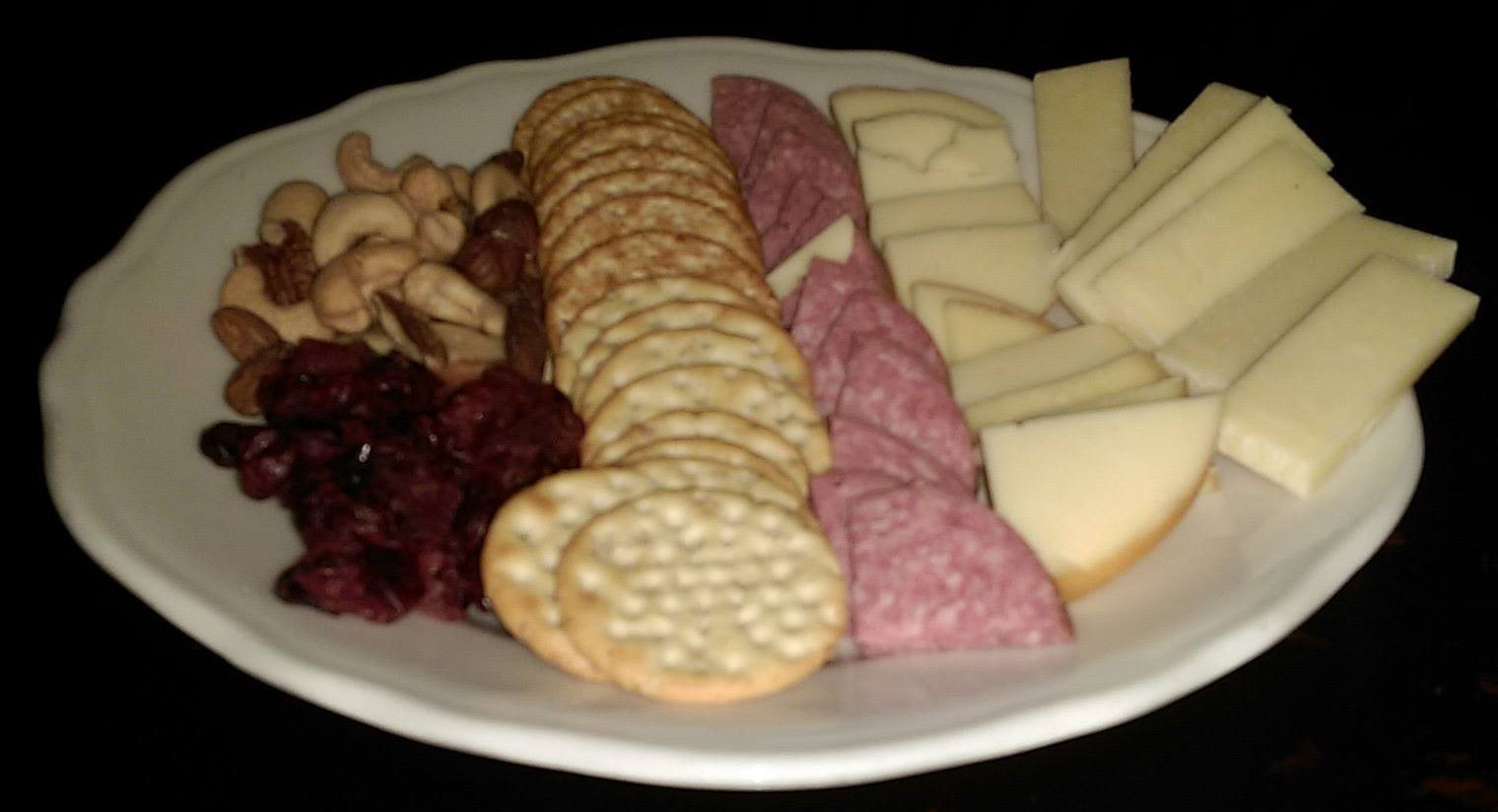 BAC is significantly affected by the speed at which you process food. The purpose of eating food in preparation for the event, therefore, is to slow the absorption of alcohol into your bloodstream. It does not prevent it from entering your bloodstream, but the delay does give your body extra time to process the alcohol that has already made its way in. Eat plenty of food that day – full meals for breakfast and lunch – and something reasonably substantial shortly before the event. The longer the stretch of time between the meal and the event, the less effective it will be overall. “Substantial” in this context doesn’t necessarily mean “a lot”; the right type of food makes a bigger difference. Food that is slower to digest works best as a buffer. High protein and fatty foods digest slowest, as do some beans and legumes. Grains are good. High fat cheeses are really good. Keep snacking throughout the event in order to keep that buffer topped off and working for you. It doesn’t necessarily have to be much, and it should be something you enjoy (e.g. I won’t be shoveling platefuls of Kraft Mac ‘n’ Cheese no matter what happens). Ideally, it should be something that pairs well with the spirit. Avoid spicy or overpoweringly flavoured foods, really throughout the day, but especially for the meal before the event and snacks during the event. Spicy food can have an unsettling effect on your stomach, which you’re already beating on pretty hard. But more than that, strong flavours will kill your ability to taste the nuances of the spirits, and that’s likely to be a big part of why you’re there. I also tend to avoid most sweets or desserts. They make an interesting pairing, but you don’t need or want a sugar high on top of everything else you’re doing to your body. Also, the crash will be that much harder.
BAC is significantly affected by the speed at which you process food. The purpose of eating food in preparation for the event, therefore, is to slow the absorption of alcohol into your bloodstream. It does not prevent it from entering your bloodstream, but the delay does give your body extra time to process the alcohol that has already made its way in. Eat plenty of food that day – full meals for breakfast and lunch – and something reasonably substantial shortly before the event. The longer the stretch of time between the meal and the event, the less effective it will be overall. “Substantial” in this context doesn’t necessarily mean “a lot”; the right type of food makes a bigger difference. Food that is slower to digest works best as a buffer. High protein and fatty foods digest slowest, as do some beans and legumes. Grains are good. High fat cheeses are really good. Keep snacking throughout the event in order to keep that buffer topped off and working for you. It doesn’t necessarily have to be much, and it should be something you enjoy (e.g. I won’t be shoveling platefuls of Kraft Mac ‘n’ Cheese no matter what happens). Ideally, it should be something that pairs well with the spirit. Avoid spicy or overpoweringly flavoured foods, really throughout the day, but especially for the meal before the event and snacks during the event. Spicy food can have an unsettling effect on your stomach, which you’re already beating on pretty hard. But more than that, strong flavours will kill your ability to taste the nuances of the spirits, and that’s likely to be a big part of why you’re there. I also tend to avoid most sweets or desserts. They make an interesting pairing, but you don’t need or want a sugar high on top of everything else you’re doing to your body. Also, the crash will be that much harder.
Drink Lots Of Water
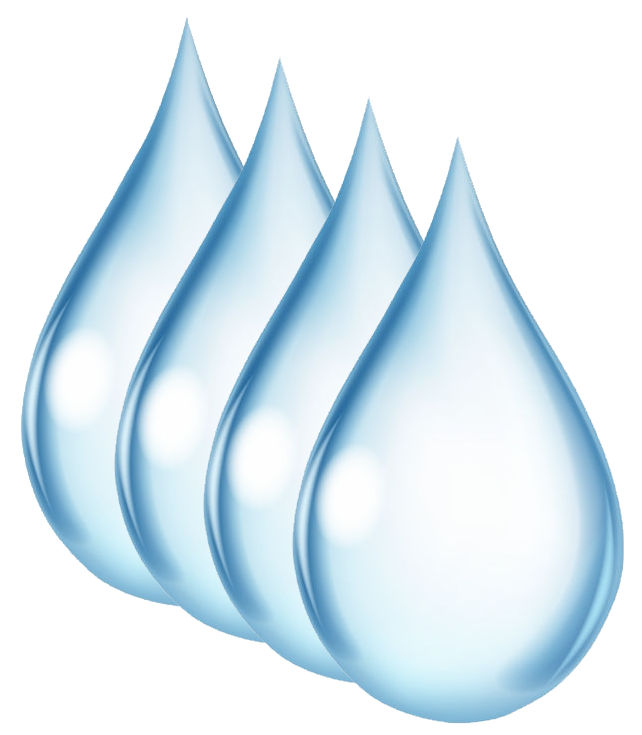 Start the event hydrated. Make sure you have plenty of water with your preparatory meals on the day of the event. During the event… Drink lots of water! For a whisky festival, I recommend rinsing your glass after each whisky (or two), and drinking the water you use to rinse. This will likely be about 2-4oz of water for, ideally, no more than 1/4 to 1/3 oz whisky. You may have to hit the restroom a couple of times, but only to pee. Better than the other reason to have to hit the restroom during an event like this. Also, alcohol is a diuretic: it suppresses the hormone which tells the kidneys to reabsorb water rather than dump it through the bladder. So you may even expel more than you consume by volume. Also also, if you’re peeing, you ain’t just expelling water. There’s nutrients in that there whizz: electrolytes, vitamin B, potassium, magnesium, sodium, stuff. Some of these are particularly important for proper brain function, and part of the groggy feeling you get with a hangover is a result of this depletion. Replenishing these nutrients, therefore, is important. Some folks carry the powdered electrolyte packages with them and have a glass during the event to keep themselves topped off. It’s certainly important to have some after the event. No coffee! It tricks & confuses the body, and you really want to be paying attention to your body. If you’re jacked on caffeine, your body isn’t telling you the truth or sending the warning signals that it should be sending, and that’ll be bad in the long run. Also, you don’t want to double-down on the diuretics.
Start the event hydrated. Make sure you have plenty of water with your preparatory meals on the day of the event. During the event… Drink lots of water! For a whisky festival, I recommend rinsing your glass after each whisky (or two), and drinking the water you use to rinse. This will likely be about 2-4oz of water for, ideally, no more than 1/4 to 1/3 oz whisky. You may have to hit the restroom a couple of times, but only to pee. Better than the other reason to have to hit the restroom during an event like this. Also, alcohol is a diuretic: it suppresses the hormone which tells the kidneys to reabsorb water rather than dump it through the bladder. So you may even expel more than you consume by volume. Also also, if you’re peeing, you ain’t just expelling water. There’s nutrients in that there whizz: electrolytes, vitamin B, potassium, magnesium, sodium, stuff. Some of these are particularly important for proper brain function, and part of the groggy feeling you get with a hangover is a result of this depletion. Replenishing these nutrients, therefore, is important. Some folks carry the powdered electrolyte packages with them and have a glass during the event to keep themselves topped off. It’s certainly important to have some after the event. No coffee! It tricks & confuses the body, and you really want to be paying attention to your body. If you’re jacked on caffeine, your body isn’t telling you the truth or sending the warning signals that it should be sending, and that’ll be bad in the long run. Also, you don’t want to double-down on the diuretics.
Know Yourself And Listen To Your Body
Move at your own pace and literally nobody else’s. Don’t try to “keep up”, especially with a seasoned attendee, someone twice your size, or an idiot who was just looking for an expensive way to get drunk. At an event like this, by the time you start to feel the effects of the alcohol, you will already have consumed more than you needed to get you to that point. It takes time for the alcohol to enter the bloodstream, and as you have likely continued to sample, the last couple of samples are still working their way in. So when you start to feel it, slow down or stop (at least for a bit). Get some (more) water, get some food, grab a seat and take a break. And take as long a break as you need: 15 mins, 30 mins, an hour. Who cares? It ain’t a contest, and it’s supposed to be enjoyable. Once your head clears and you feel up for it, head back on in, but watch the pace. At this point, there’s still plenty of alcohol in your bloodstream, and you’re just “topping off”. Slow down a little, and take further breaks as you need. In terms of pacing, a great way to slow things down is to engage with the folks pouring, especially if they’re distillery representatives, or owners, or Master Distillers. Chat with them a little, let them tell you their story. If their table has a lot of offerings (more than would be healthy to try at once), have them recommend one or two to try. No-one is likely to force more on you than you want, and they’ll be happy to suggest their favourites, or what they feel best represents their range, or a particular gem. And finally, when you feel that you’re done, be done. Doesn’t matter what time it is. You’ll know when you’ve reached the limit of your enjoyment, and that is absolutely when you should call it quits. Don’t force yourself to keep going – that’s a terrible idea and certainly won’t be enjoyable. You don’t need to close down the event. You certainly don’t need to keep drinking until the event ends. Grab a bottle of water, wander around the floor, enjoy the people watching. Or just bow out, head back to your room, and bring your day to a close.
After The Event
 Drink water. Ideally, drink an electrolyte sports drink to make up for what you’ve been expelling all night (and may continue to expel). I’ve also found that a vitamin B complex is a good thing. You will have lost some along with the electrolytes, and it seems to eliminate some of the fogginess the next morning. Oh, and remember the other nutrients that you lost with all that peeing? Consider popping your preferred multivitamin as well, help the brain get itself back up to speed.
Drink water. Ideally, drink an electrolyte sports drink to make up for what you’ve been expelling all night (and may continue to expel). I’ve also found that a vitamin B complex is a good thing. You will have lost some along with the electrolytes, and it seems to eliminate some of the fogginess the next morning. Oh, and remember the other nutrients that you lost with all that peeing? Consider popping your preferred multivitamin as well, help the brain get itself back up to speed.  Then rest. Rest well. Sleep for as long as you need to sleep. Do NOT make any early morning commitments for yourself the next day. You may be fine, but you may not be. More sleep is more time for the liver to work through more alcohol and get that BAC back to (or closer to) normal. You’ll likely get up to use the facilities a time or two. Grab a drink of water and hit the sack again until you feel that you’re ready to be up and about for the day.
Then rest. Rest well. Sleep for as long as you need to sleep. Do NOT make any early morning commitments for yourself the next day. You may be fine, but you may not be. More sleep is more time for the liver to work through more alcohol and get that BAC back to (or closer to) normal. You’ll likely get up to use the facilities a time or two. Grab a drink of water and hit the sack again until you feel that you’re ready to be up and about for the day.  I also tend to have trail mix to hand to munch on. Not much at a time, but the salt and fat and little sweet work nicely with the sports drink to settle the stomach. Also, if there’s still some alcohol swirling around in there waiting for absorption, it’ll add that buffer and give you a little more time.
I also tend to have trail mix to hand to munch on. Not much at a time, but the salt and fat and little sweet work nicely with the sports drink to settle the stomach. Also, if there’s still some alcohol swirling around in there waiting for absorption, it’ll add that buffer and give you a little more time.
The Next Day
You’re Not Sober
Let’s be clear, when you wake up the next day, there’s a damned fine chance that there’s still booze in them thar veins. Of course, this comes down to the volume of alcohol you consumed (divided by the hours since consumption). Still, it’s probably best to avoid driving, heavy machinery, etc. first thing in the morning. Maybe give yourself another half to full day before you consider yourself back to normal. For me, I assume that I need about 24 hours past the end of the event for the alcohol to process out. Here’s the calculated reasoning…
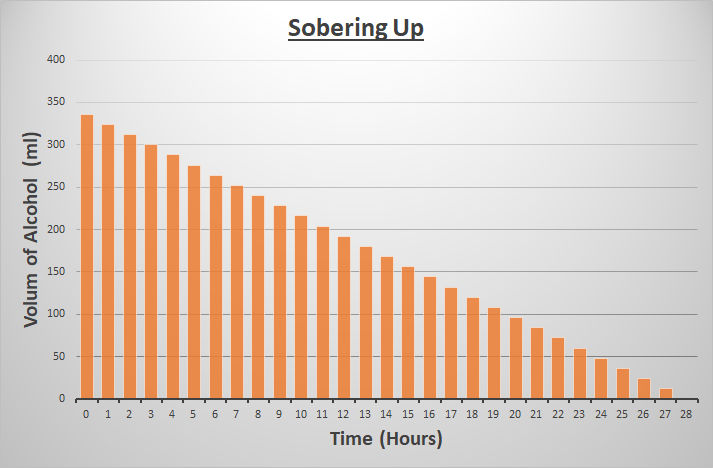
I’m guessing that the average strength of all the whiskies I try is about 48% ABV. I tend to sample no fewer than 60 whiskies. Ideally, each pour should be ¼ oz, but some get closer to ½ oz. So I’ll take the middle ground and assume 3/8 oz per pour. That’s 22.5 oz of whisky at 48%, which I’ll round up to 24 oz assuming I get more careless as the night goes on. Switching to milliliters, that’s approx. 700 ml of whisky at 48% ABV, which gives me 336 ml of actual alcohol. It seems that the the body metabolizes about 12ml of alcohol per hour (about one unit, per the UK definition). Mathing that up tells me that I need 28 hrs to metabolize all of the alcohol that I consumed during the 4 hrs of WhiskyFest.
Breakfast
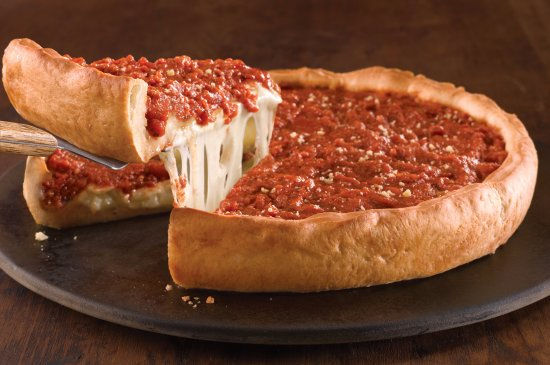 Based on many years experience, I have found that a high-fat “breakfast” seems to be an amazing recovery food. I’m sure this varies by person. Our WhiskyFest group agrees, to a person, that deep dish pizza is the primary reason that any of us are back to fully functional human beings by the following afternoon.
Based on many years experience, I have found that a high-fat “breakfast” seems to be an amazing recovery food. I’m sure this varies by person. Our WhiskyFest group agrees, to a person, that deep dish pizza is the primary reason that any of us are back to fully functional human beings by the following afternoon.
Total Recovery
Detox
This part is up to you, but for me, it’s all about balance. I figure that after deliberately pounding my body with a toxin for hours straight, I should also deliberately help it recover. In my case, as WhiskyFest tends to involve several days of indulgence, several days recovery doesn’t seem too much to ask. For those that may have embarked upon some training in advance of the event, this should help you reset back to normal levels of consumption.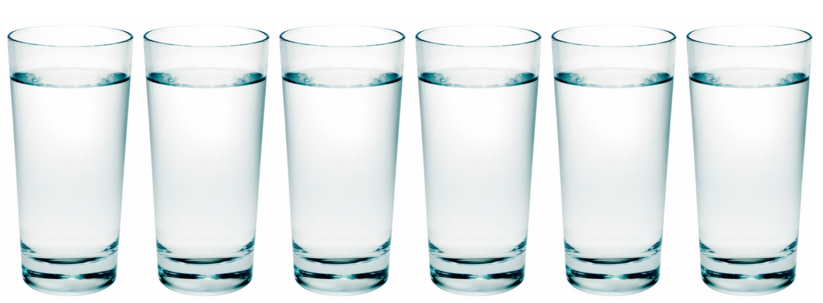
In short, I don’t drink alcohol for 5-7 days after the event. I even limit myself to just one coffee per day. I drink water pretty much exclusively, with maybe an electrolyte drink or two the first couple of days if I feel my body needs it. I don’t twitch, I don’t get the sweats, I do get bored (my primary motivation for drinking is flavor, so water is kinda dull). But that’s not much of a burden for a week. I also make certain that I get good, full nights of sleep the 2-3 days following the event. Again, this was a major physical event, and your body is gonna be tired: your liver essentially just ran a marathon. Let it rest up well for a few days.
Supplement: How Does Your Body Process Alcohol
tl;dr
Alcohol is absorbed primarily via the small intestine. It enters the veins which collect blood from the stomach & bowels, which then deliver it to the liver for processing. The liver exposes the alcohol to enzymes which metabolize it, then passes the results back into the bloodstream for the kidneys to expel. But only a certain amount of alcohol can be metabolized every hour. This rate varies by person based on body mass, size of liver, and balance of the necessary enzymes.
Not Long Enough; Want To Read More
Alcohol is absorbed into the bloodstream from either the stomach or the small intestine, depending on whether or not food is present in the stomach. If there is no food, the alcohol passes quickly to the small intestine, which significantly increases the surface area for absorption. If there is food in the stomach, the muscle between the stomach and the small intestine closes off to allow stomach acid to do its whole digestion thing. This prevents the alcohol from moving into the small intestine immediately, which significantly slows the rate of absorption. This is a major reason why eating food before and during consumption of alcohol is so important. The alcohol is absorbed through the capillaries of the stomach and small intestine, is then carried into the veins by the bloodstream, enters the portal vein, which then carries it to the liver for metabolization. Which is, in fact, a word. There are two enzymes in the human body which perform the task of breaking down the alcohol molecule, a process which occurs in two stages. The first stage engages the enzyme alcohol dehydrogenase, which produces a substance called acetaldehyde. This is itself a toxin, and is partly responsible for “hangover” symptoms such as nausea and headaches. The second stage metabolizes this toxin using the enzyme acetaldehyde dehydrogenase, which turns it into acetic acid. This is an inactive substance that the body then breaks down into carbon dioxide and water, which can then be easily eliminated. People whose bodies have a harder time with this second stage end up with more of the first stage toxin in their bloodstream, and experience worse hangovers. These enzymes live almost exclusively in your liver, where the vast majority of the metabolizing happens; a very small amount does occur in the stomach. The process converts the alcohol into something more water soluble, which is then carried in the bloodstream to the kidneys. The kidneys snag these and forcibly eject them from the body. OK, you pee ‘em out.
The Important Bit
Here’s the part that’s really pertinent: Alcohol is metabolized at a constant rate, regardless of the amount you consume. The amount of alcohol your body can process at a time is based entirely on the amount of the necessary enzymes contained in your liver. Because the amount of each enzyme is constant, the volume of alcohol that they can metabolize at a time is also constant. If you consume more alcohol in an hour than your liver can metabolize, the alcohol begins to accumulate in your bloodstream; it circulates throughout your body waiting its turn. (A small percentage is expelled in your pee or in your breath, but nothing significant). This is what increases your Blood Alcohol Concentration (BAC). And BAC’s what it’s all about!
In which the boarding announcement is a lie, I fend off a young kleptomaniac, and continue to enjoy the thrill of a good takeoff.
In which the four of us are together in the same place at the same time for the first time in years, so we eat, drink, and go looking for another drink…
In which we all kindof just do our own thing, but kindof together, involving looking at old things in the loft, packing some things to take (new) home, and then go for a drink because of course we do…
In which I meet the good friend I’ll be travelling with, I meet a good old friend for lunch, I meet three new wondeful whiskies, and finally I meet an early and ancient grave…
In which I intentionally drive the wrong direction, unintentionally drive the normally-right-but-wrong-today direction, drive the right direction for three hours, ride a FERRY!, and visit a distillery…
In which we have a hearty meal, drive a road that would make Six Flags jealous, walk all directions looking for distilleries, witness a whisky baptism, and I fall in love with a new new make spirit…
In which we visit our favourite distillery on Isaly, meet our new favourite tour guide, get rather comfortable with the facility, consider moving in, decide against it, and visit an old church and a beach instead. As you do…
In which we just have one tour booked, an informal “build your own tasting” sort of afternoon planned, and end up with a curated tasting that may be impossible to beat…
In which I meet a lassie fae Dumbarton who doesn’t bite, I find a church pew I’d visit every Sunday guaranteed, and find out just what Caol Ila has been doing since last we met. There’s also the last ferry ride of the trip during which I rediscover a British culinary delight…
In which I stand in a Colosseum-like tower to watch ferries far below, make a personal pilgrimage in something of a literal sense, visit a place that has tried to kill me no fewer than three times in the past, and drink in one of my favourite views on planet Earth. Oh, I also spy the retirement cottage I want but can never have…
In which I take a wrong turn, traffic is too slow, we delay a tour for the better at one of the oldest distilleries in Scotland, and induce whiplash through an incredible experience at literally the newest distillery in Scotland…
